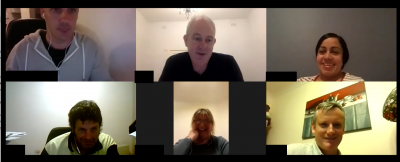Cities that thrive – The importance of integrating research with community wisdom
In our post-pandemic world, the need for thriving urban areas is more important than ever. A thriving city isn’t just about economic success or new buildings; it’s about creating lively, inclusive, and sustainable communities where people can truly flourish.
Achieving this goal requires a two-part approach: solid research and genuine community involvement.
Thank you to the team at Square Holes for inviting me to write this article to explore how combining strong research with community insights can create flourishing urban environments.
The importance of research
Based on my experience, research is a critical element of making smart decisions in urban development. It gives us the data and insights needed to understand complex city dynamics, predict future trends, and make decisions based on evidence.
As an example, city planners and governments use research and statistics to strategically plan how land is used and developed in a particular geographic area. The planners study things like how many people live here, how many more people might come, and where they are likely to work. This helps them figure out where to build new homes, roads, and parks. By using this data, they can make sure resources are used wisely and that the city grows in a sustainable way. They also use the information to make sure there are enough transportation options and green spaces for everyone to enjoy. This way, they can control how the city grows, make sure it doesn’t spread too far, and make it easier for people to get around, making it a better place to live for everyone.
The power of community engagement
Community engagement, on the other hand, is the process of involving people in decision-making and problem-solving, particularly in relation to things that interest or affect them. It’s about creating a dialogue between city planners and the residents they serve, ensuring that the voices of the community are heard and considered.
I believe in bringing people together to have dialogue and deliberation about the future of where they live, or something that affects them, such as a new government plan or policy. The richness that lived experience and the sharing of stories can bring to the decision-making process is invaluable. It helps decision-makers, like Councils and state governments, get decisions right the first time.
Building on the above example of a government plan for growth of a city, applying a layer of robust community engagement on top of the research, where planners involve and really listen to the community before making decisions, is a no brainer. Instead of just looking at the research – the data and statistics – planners should be actively involving residents in discussions about how and where the city should grow.
This kind of community engagement means talking openly with people, hearing their ideas and concerns, and working together to find solutions. By doing this, such a Plan builds strong relationships with the community and makes sure everyone feels like they have a say in what happens in their city. This way, decisions would not only be based on facts and figures but also on the real experiences and needs of the people who live there.
A strong synergy between research and community engagement
I often joke that we can’t solve all the world’s problems just by talking about our opinions on them! This shows how important it is to have solid facts behind our ideas, and to be smart about how we use those facts alongside our own experiences.
When we mix research with talking to people, it’s like magic happens, especially when it comes to making cities better.
I usually think of research as something experts do to the communities, and engagement as something we do with communities. But imagine if us engagement professionals all worked closely with researchers, making sure everyone contributes to helping our cities grow.
Working this way of course brings challenges. We must find the right balance between facts and what people think and feel, making sure everyone knows their voice matters. It’s not always easy, but it’s important to make sure everyone feels heard and that decisions are fair.
Practical steps for integrating research and community engagement
For those of us in community planning and policy-making aiming to harness the power of this synergy, there are several practical steps to consider:
- Always begin our community engagement processes with the deliberate question of ‘What are the facts?’ – what do we already know about the community we are working with? What’s our evidence of this? If there are gaps in the research, what are they?
- Involve community members as early as possible in the research phase to gather local insights that can guide data collection.
- Clearly communicate the findings of research to the community and explain how their contributions are being used alongside these findings.
- Establish mechanisms for ongoing community deliberation and adjust plans accordingly.
- Use a mix of face-to-face, paper-based and digital tools for data collection and community engagement, making the process more inclusive and efficient.
I’ve found that these steps not only enhance planning processes but also build trust and foster a sense of ownership among community members.
Conclusion
In summary, combining solid research with strong community engagement is key to building cities that thrive. By valuing both data and community input, we can create urban spaces that are functional, sustainable, lively, and inclusive.
Starting with good research and adding effective storytelling and engagement helps us make the best decisions for our communities—decisions that last and truly matter. Let’s embrace this holistic approach to ensure a future where everyone can thrive.
Becky Hirst is the author of For the Love of Community Engagement, a reflective memoir that calls for a rethink about how government connects with communities to inform their decision-making. Through her work over the last 25 years, Becky has worked with hundreds of government clients, helping them to engage with the people they serve. She estimates that during this time she has engaged with over 50,000 people in conversations about things that matter!




